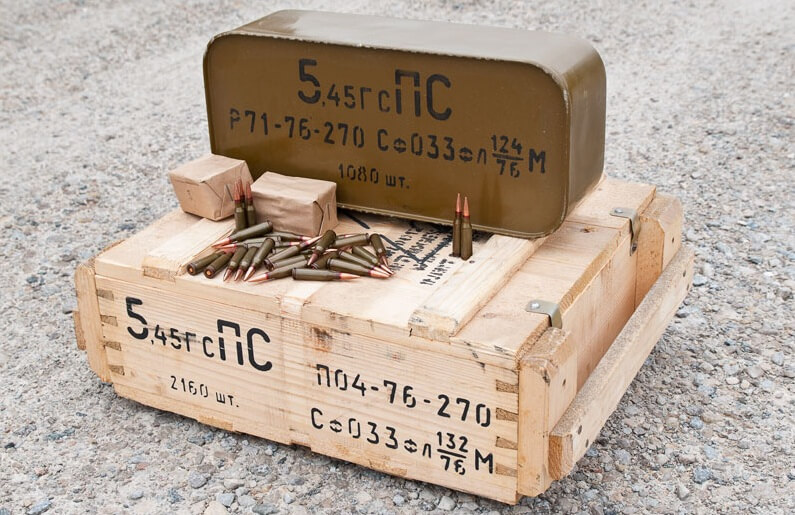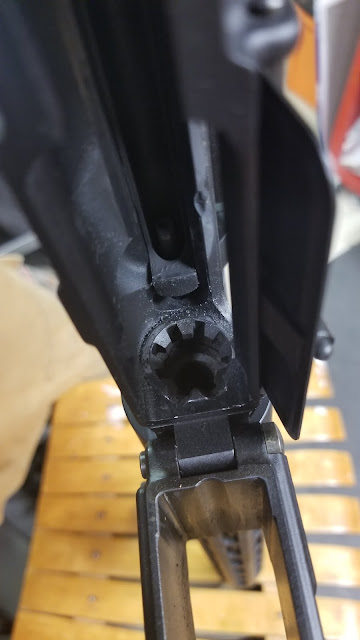5.45x39mm Ammo Variants

Introduction:
First introduced along with the Russian AK-74, the 5.45x39mm cartridge has served as Russia's standard service round for decades. The 5.45 cartridge was developed at a time when military forces around the world were beginning to favor sub-6mm cartridges. This idea was really proven due to the performance of NATO's 5.56mm cartridge. Russia wanted in on this performance improvement, but wanted to do it in their own way. The 5.45 is a very high velocity round, with mild recoil and excellent penetration depending on the specific projectile. By switching to a projectile that is less than half the weight of a standard 7.62x39mm bullet, Russian soldiers are able to carry more ammo a further distance, and the higher velocity allowed for an effective range more on par with Western counterparts. I'm going to delve into some of the different 5.45 variants that are currently in use and in production, and look at some of the different roles they play.
Details:
7N6
7N6 is probably the most well-known variant of 5.45 ammunition in the United States. Ironically, even though it is popular, supplies of it have largely dried up in the past few years. Unfortunately, 7N6 ammunition has been banned from importation by the ATF, who classified it as "Armor Piercing Pistol Ammunition".
The 7N6 projectile is comprised of a copper or b-metal jacketed bullet with a mild steel core. This steel core is what allowed the ATF to classify the ammo as armor piercing, even though it's actual penetration capabilities are nothing too crazy. 7N6 is identified by the red lacquer just over the neck of the case. It was the standard loading of 5.45 for the Russian army for many years, eventually being modernized in the late 80's. surplus 7N6 ammunition used to flood the US market before it was banned, making the late 2000's the golden age of AK-74 use in the US.
7N10
The 7N10 cartridge was developed to further improve upon the penetration capabilities of 7N6, in order to stand up to modern body armor plates. The round is designed to be ballistically identical to the 7N6 cartridge, but instead of a mild steel core, incorporates a hardened steel penetrator. The projectile is designed with a lead plug in the tip that, when impacting a soft target, is pushed aside by the hardened steel core, shedding the plug and jacket and creating shrapnel to improve wounding. 7N10 has replaced 7N6 since the late 90's as Russia's standard cartridge. It is easily differentiated from 7N6 by the purple lacquer around the case neck.
7N39
7N39 is Russia's specialized armor-piercing variant of 5.45. The bullet is a tungsten-carbide and cobalt centered round that has a muzzle velocity of about 850 meters/second. I couldn't find any sources that assessed the penetration capabilities of 7N39, but I would imagine it is comparable to the American M995 5.56 round, which can penetrate the armor of a BRDM-2 armored vehicle at range.
Conclusion:
Video games such as Escape From Tarkov have brought an element of nuance into gameplay when it comes to ammo variants. Developers seem to really be doing their research more and more and integrating these elements into the games that they create. Either that, or lots of tech guys are also gun guys.
Variances in ammunition capabilities are important for any military, the ability to penetrate an enemy's body armor is probably one of the most important characteristics of a service cartridge. As the requirements of a military change, they continue to push the capabilities of their service cartridge to its limits. I don't see Russia moving beyond the 5.45 cartridge any time soon. It is an effective cartridge with good range and good penetration/wounding capability. No real reason to ask for more.


Comments
Post a Comment